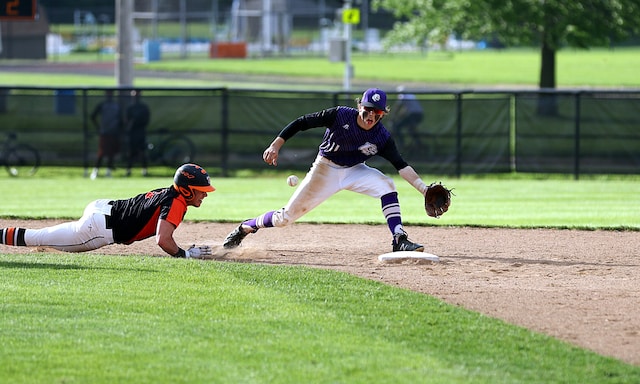The Shortstop’s Defensive Prowess
The shortstop position in baseball holds a significant role, covering the area between the second baseman and the third baseman. Renowned for their defensive abilities, many major league teams prioritize strong defensive skills when selecting their shortstop. While a good hitting shortstop is a bonus, youth baseball often sees the shortstop as the team’s best athlete and leader.
Essential Defensive Skills
To excel as a shortstop, one must possess well-rounded defensive capabilities. This includes proficient fielding, good speed, a wide range, and a strong throwing arm. The combination of these skills ensures the shortstop’s effectiveness in securing outs and preventing opposing teams from advancing on the basepaths.
Strategy
The shortstop’s position on the field is between the third baseman and the second baseman. The depth at which a shortstop plays depends on their arm strength and speed. Playing deeper allows for increased coverage of balls hit into the outfield, while still maintaining the ability to throw out runners attempting to reach first base.
Covering Second Base and the Double Play
One of the primary responsibilities of the shortstop is covering second base when the ball is hit to the right side of the field, between first and second base. This strategic positioning ensures that potential plays at second base are effectively executed.
The shortstop’s involvement in double plays is crucial. When the ball is hit to the right side of the infield, the shortstop must field the ball, drag their foot across the base, and make an accurate throw to first base. Youth players should prioritize getting the lead runner out and focus on making precise throws, just as they would when fielding the ball normally.
During a double play, the shortstop must make quick decisions based on the fielding position. If they are in close proximity to second base, it is safer to tag the bag and make the throw. For balls fielded between 8-15 feet away from the bag, an underhanded toss to the second baseman is preferable. If the distance exceeds 15 feet, an overhand throw is the appropriate choice.
Responsibilities and Contributions
Beyond covering second base and executing double plays, the shortstop assumes various other responsibilities on the field. These include:
- Backing up the second baseman during steal attempts.
- Acting as the cutoff player for plays at third base and home plate when the ball is hit to left field or center field.
- Covering second base on pickoff attempts.
- Taking charge of pop-ups on the left side of the infield and shallow outfield.
Legendary Shortstops
Throughout the history of baseball, several shortstops have attained legendary status, leaving an enduring legacy in the sport. Notable figures such as Cal Ripken, Jr., Ozzie Smith, Honus Wagner, Robin Yount, and Derek Jeter have captivated fans with their exceptional skills and contributions to the game.
Conclusion
The shortstop demonstrates outstanding defensive prowess and contributing to the success of their team. A well-rounded skill set, strategic positioning, and effective decision-making on the field are essential for excelling as a shortstop.
Whether in youth baseball or the professional leagues, aspiring shortstops must dedicate themselves to honing their defensive abilities and embracing the leadership role bestowed upon them.






